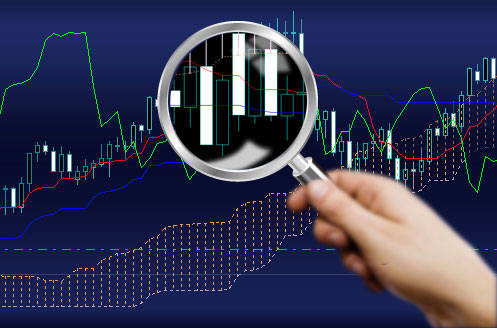What is scalping?
Scalping is a trading strategy in which the trader makes dozens or even hundreds of trades daily, looking to capture a few pips per trade. Generally, scalpers stay in trades for less than a minute, bolting as soon as their position captures a few pips. Simply, scalping is a procedure by which one makes a trade with the goal of only making a couple of points. Basically scalping is profiting from small moves in the market. A scalper trader will only stay in the market for seconds to minutes at a time. Forex scalping is the art of using high leverage and a large number of short term trades to make a steady profit. Usually, only 1 to 10 pips are targeted for each trade. Trading is done on the major currencies. The majority of intraday scalpers tend to be futures players, meaning they profit from small moves in the market.
A scalper intends to take as many small profits as possible, not allowing them to evaporate. Such an approach is the opposite of the “let your profits run” mindset, which attempts to optimize positive trading results by increasing the size of winning trades while letting others reverse. Scalping achieves results by increasing the number of winning trades and sacrificing the size of the wins. It’s not uncommon for a trader of a longer time frame to achieve positive results by winning only half or even less of his or her trades – it’s just that the wins are much bigger than the losses. A successful scalper, however, will have a much higher ratio of winning trades versus losing ones while keeping profits roughly equal to or slightly higher than losses. Practically any trading system, based on particular setups, can be used for the purposes of scalping. In this regard, scalping can be seen as a kind of method of risk management.

Scalping Requirements
- Price spreads and commissions to be as low as possible in order to reduce the cost of doing business to a realistic proportion of turnover.
- Data provision (Broadcasted prices) and execution must be fast.
- Adequate liquidity and a sufficiently large capital base in order to make the small targets and time spent monetarily worthwhile.
The Advantages of Scalping
- Very effective method of using capital with minimal risk per trade.
- High percentage win rate.
- Scalping is suitable for the impatient trader who is prepared to devote a lot of time and continuous focus to the market.
- Event risk is small as the scalper will usually be almost certain of a fill at the chosen exit point even if conditions suddenly change.
The Disadvantages of Scalping:
- Scalping is intense, draining, and demands a lot of screen time. Accurate timing is vital.
- Higher cost per unit of profit than longer term strategies.
- Scalping requires complex knowledge of market structure and order flow.
- Scalping can be very stressful and is not suitable for spread betting.
- Scalping fee of $1 per Mini Lot (10,000 base currencies) applies. Relative fee applies.
- Minimum trade fee of $1 applies.
The following are useful parameters that can assist managing scalping trading:
- Change the spread and commission, where increasing the cost of making trades, cause longer time to close a position. Reducing the cost by low spread and low commission will attract scalpers to make trades with a broker.
- Enable the option to stop trading on symbols after price stopped in a specific seconds from the BackOffice.
- As fast execution will attract scalpers you can user Auto Brokeroptionbut after assuring that the data feed is very fast and stable or use the VertexFX Smart Dealer VBLapplication with fast responding setting over the scalper group of clients. Alternativelyas OFF Auto Broker is risky for scalpers,setting manual broker or a delay in responding at smart dealer will reduce scalping performance.
- Increasing the “Minimum amount per deal” parameter will reduce scalping and reducing this parameter will make it easier to attract it.
- Monitor your feed prices all the time and keep it filtered in the VertexFX Currency Server to avoid any wrong quotes.
What is Arbitraging?
Arbitragingis a type of trading, which allow the traders to take an advantage of a price difference between two or more markets. The profit being the difference between the market prices, most of the day traders need to make an easy profit from the market price, by placing buy at low price, and sell at high price. Arbitrageurs keep monitoring the price difference between two same symbols (product) over two different companies or on the same company and make profit with its difference, also they monitor two different related symbols from two different exchanges and make a profit from it.
VertexFX Best structure to avoid Arbitrageurs:
Using VertexFX Multi level management you can manage your clients according to the trading methods, you can make a specific group for such type of traders “Scalpers/Arbitrageurs” and you can handle this group according to your need as the following:
Scenario 1: You can cover your Scalpers/Arbitrageurs with specific LP using VertexFX Bridge as STP structure, also using VertexFX Bridge you have the ability to configure your coverage rules according to your need, also you be able to add more than 1 Liquidity Provider to cover with the best price of your LPs’ prices.
Scenario 2: You can use VertexFX Smart Dealer VBLas a back end automated manager as OTC structure, the smart dealer has the ability to handle “Accept/Re-quote” your Scalpers/Arbitrageurs order according to the market price to avoid non logical profit from such kind of traders.
Also, you are able to manage the 2 scenarios on the same tree by grouping those types of traders for 2 groups, then run the VertexFX Bridge over the first group, and run the VertexFX Smart Dealer VBLon the second group at the same time.
- Read more about Scalpers and Arbitraging in Wikipedia.